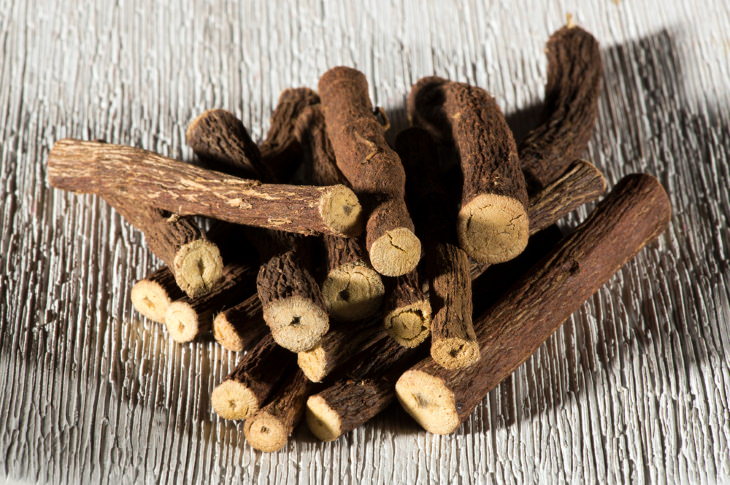7 Effective Home Remedies for Acid Reflux
Heartburn and acid reflux is painful and
uncomfortable but also, unfortunately, terribly common. In fact, studies
show that one in every five Americans suffers from acid reflux, and
many more have experienced the condition at least once in their
lifetime. For many, the burning feeling in the throat and chest is all
too familiar and oh so difficult to banish.

In the past few years especially, more and
more people have also started opting out of heartburn and acid reflux
medication, ever since some of these drugs have been found to increase
mortality rates. At the same time, suffering silently and trying to cope
with the symptoms doesn’t sound like the best strategy either. So, what
should acid reflux sufferers do? Well, it turns out that there are many
medically-approved home remedies and small but beneficial habits to
consider. Below, we list 7 of such excellent tricks and remedies, give
them a shot!
What is acid reflux?

Before we discuss the remedies for acid reflux, let’s try to understand
why this symptom occurs in the first place, as this will help you manage
the condition much better. Acid reflux occurs when stomach acids spill
out upwards into the esophagus, which is the pipe that leads food from
your throat to the stomach. Between the esophagus and the stomach, there
is a “valve” called the lower esophageal sphincter, which tightens and
relaxes at the right time to let food into the stomach but not let the
acid splash out.
When this sphincter doesn’t work as it’s supposed to, you get acid
reflux. Unlike the stomach, the esophagus doesn’t have the membrane
protecting it from stomach acid, and the lining of the esophagus becomes
damaged, causing burning pain in the chest and throat. Home remedies go
a long way in managing this painful symptom. They intend to position
the body in a way that will not allow the stomach acids to leak into the
esophagus and will make the stomach less likely to do so in the first
place.
1. Licorice and other herbs

People have been taking licorice to aid digestion and deal with
digestive issues for millennia, and the herb has a pretty amazing
soothing and anti-inflammatory effect on the entire digestive system.
However, when it comes to ordinary licorice root, it can only be enjoyed
in limited quantities as drinking too much licorice tea or even eating
too much licorice candy can affect the cardiovascular system, so you
shouldn’t take traditional licorice every day if you’re suffering from
vascular issues or heart problems.
A safer alternative is deglycyrrhizinated licorice (DGL), in which the
glycyrrhizin compound that raises blood pressure has been removed. It
usually comes in tablets with no taste which you should take 20-30
minutes before a meal.
Other herbs, such as ginger and chamomile likewise have soothing
properties for the digestive tract and may help you with acid reflux
symptoms as well, if you’re not a fan of licorice. All of these herbs
can be enjoyed through an herbal tea taken 15-20 minutes before or after
a meal.
2. Avoid sleeping on the right side
Do you prefer to sleep on your right side? Switching things up may be
worth a shot if you’re suffering from acid reflux, as studies have shown
that sleeping on the right side significantly worsens the symptoms of
the condition. Though scientists aren’t entirely sure why it happens as
of now, it’s most likely due to human anatomy.
This is because the esophagus actually enters the stomach not from the
center, but the right side in most people. Therefore, when you lay on
your right side, the acid is more likely to reach the esophageal
sphincter and leak out. Try switching sides and start sleeping on the
left side, if you can.
3. Decrease the portion size 

One of the main reasons why acid reflux occurs, in the first place, is
because the stomach is stuffed with food to the brim and pressure builds
up inside, making the esophageal sphincter more likely to stretch out
and let acid spill into the esophagus. Hence, managing portion size can
go a long way and reduce the likelihood of heartburn and acid reflux.
This doesn’t mean that you have to eat less per se – simply spread out
the same amount of food you eat in a day into more but smaller meals.
So, instead of having one large meal in the morning and the evening,
divide the same amount of food into 3-4 smaller meals spread out evenly
throughout the day.
4. Limit how much coffee you drink


Dear fellow coffee drinkers, we have bad
news for you – drinking too much coffee has been found time and time
again in studies to worsen or trigger acid reflux. Coffee does so in a
few different ways. Firstly, coffee has been found to be capable of
temporarily weakening the esophageal sphincter. Secondly, the acid
damage to the esophagus among coffee drinkers was greater in one study
compared to those who don’t drink coffee and still have acid reflux.
And lastly, one research article even showed that coffee increased the
duration of acid reflux episodes between meals. Thus, even if the coffee
itself does not cause acid reflux, it may make it worse, so cut down on
the amount you drink to 1-2 cups a day, or try eliminating it
altogether and see if it helps with your symptoms.
5. Don’t eat within three hours before sleep
Are you more likely to get an episode of
acid reflux at night? If so, it might be because you’re having a big
meal in the evening just a few hours before bed. Studies have shown that
eating before bedtime makes you more likely to experience acid reflux
symptoms when you’re trying to go to sleep. This is because we sleep in a
horizontal position, which makes the stomach acids more likely to spill
out, especially on a full stomach.
For the same reason, experts recommend not lying down for the first
20-30 minutes after a meal. The solution is obvious – move the biggest
meal of the day to earlier in the afternoon and avoid eating food 3
hours before bed.
6. Stack up those sleeping pillows
If you’re having persistent acid reflux at
night, elevating your sleeping position can really help curb those
symptoms. Stack those pillows higher than usual, preferably so that your
shoulders are higher than your stomach when you lay on your back.
This kind of body elevation has been found beneficial for acid reflux
sufferers in a small 2011 study. Participants were asked to place an
8-inch block to elevate the head of their beds. In just one week, they
observed significant improvements in their symptoms.
7. Avoid trigger foods and drinks


Certain foods and drinks can temporarily
weaken the esophageal sphincter, whereas others simply take too long to
digest. Both of these increase one’s risk of developing acid reflux,
which is why they are known as “trigger” foods and drinks for acid
reflux and should be avoided.
Here’s a list of some of the most common
acid reflux triggers:
Raw onions irritate the lining of the esophagus and create a lot of
gas when digested, which in turn, builds pressure in the stomach.
Alcohol increases stomach acid and relaxes the esophageal sphincter.
Fatty and fried foods like pizza, potato chips, bacon, and fries,
are difficult to digest and may stay in your stomach for too long,
making you more likely to have acid reflux.
Chocolate increases the acidity of the stomach, which may worsen the
symptoms of acid reflux.
Chili powder and spicy foods may not cause acid reflux and
heartburn, but they can further aggravate the esophagus and make
symptoms worse.
Mint and anything mint-flavored is capable of irritating the
esophagus in some people.
Carbonated drinks loosen the esophageal sphincter and cause
belching, which makes acid more likely to escape to the esophagus.
In most cases, trigger foods are individual, so try eliminating one food
category at a time, like onions or mint, and see how this influences
your symptoms. Over time, you’ll learn which foods make your symptoms
worse and will be able to manage them more easily.